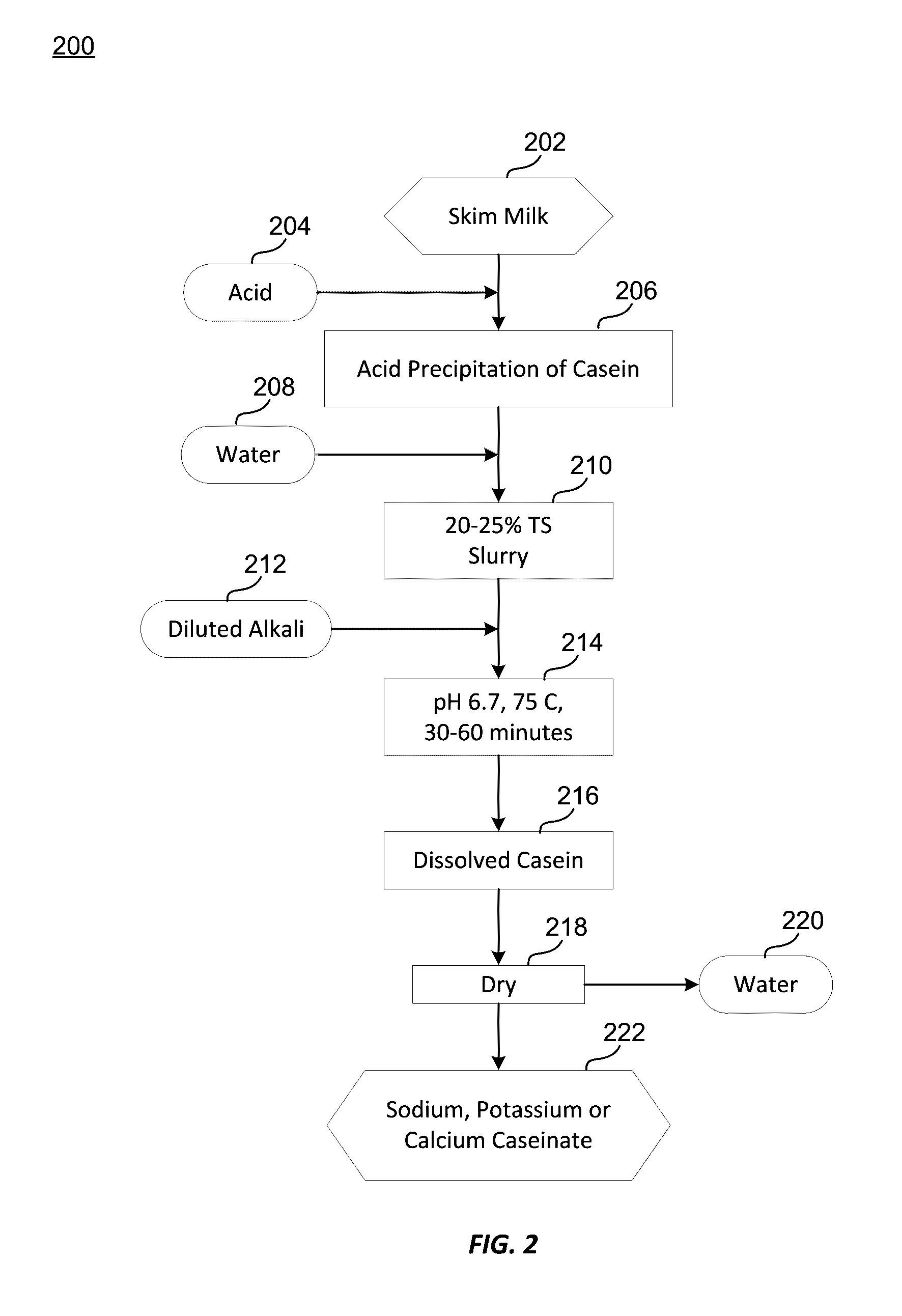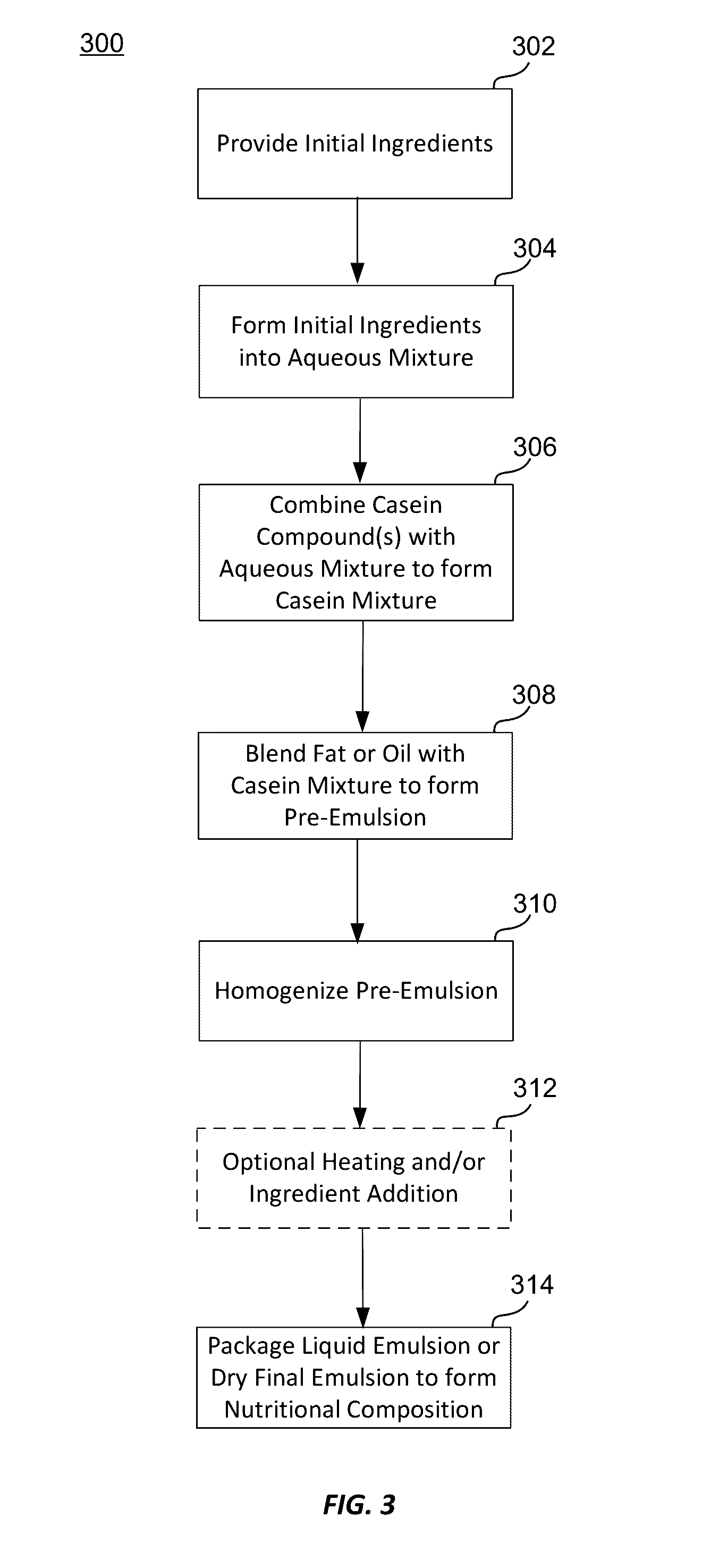Micellar casein for corree creamers and other dairy products
a dairy product and casein technology, applied in the field of lactose casein for corree creamers and other dairy products, can solve the problems of lack of noticeable dairy flavors of many consumers, unsuitable substitutes for milk fats or vegetable oils used in creamers, and inability to penetrate and emulsify vegetable oil and other hydrophobic ingredients, etc., to achieve the effect of increasing the whitening ability of a creamer and enhancing the mouthfeel
- Summary
- Abstract
- Description
- Claims
- Application Information
AI Technical Summary
Benefits of technology
Problems solved by technology
Method used
Image
Examples
examples
[0079]Nutritional compositions in the form of coffee creamers were evaluated for in-beverage stability (specifically stability in coffee), whitening ability, acidity stability, viscosity stability, and particle size for periods of 0 to 8 weeks. The analyzed coffee creamers included a control creamer made with no micellar casein (i.e., exclusively sodium caseinate), and a series of creamers that substituted the casein salts with reduced levels of micellar casein that also resulted in an overall reduction of protein levels in the creamers. Except for the control and the commercial coffee creamer, none of the analyzed creamers contained sodium caseinate. The analyzed coffee creamers are described in additional detail below.
Sample Coffee Creamers Tested
[0080]Liquid coffee creamers were made according to method 400 described above with the casein compound being either sodium caseinate (the control), or native micellar casein at specific weight percentages of the sodium caseinate used in ...
PUM
 Login to View More
Login to View More Abstract
Description
Claims
Application Information
 Login to View More
Login to View More - R&D
- Intellectual Property
- Life Sciences
- Materials
- Tech Scout
- Unparalleled Data Quality
- Higher Quality Content
- 60% Fewer Hallucinations
Browse by: Latest US Patents, China's latest patents, Technical Efficacy Thesaurus, Application Domain, Technology Topic, Popular Technical Reports.
© 2025 PatSnap. All rights reserved.Legal|Privacy policy|Modern Slavery Act Transparency Statement|Sitemap|About US| Contact US: help@patsnap.com



